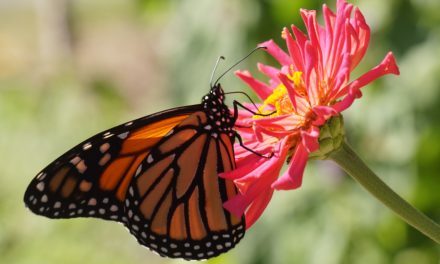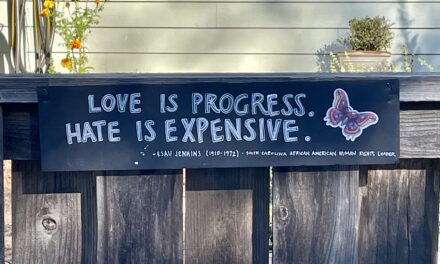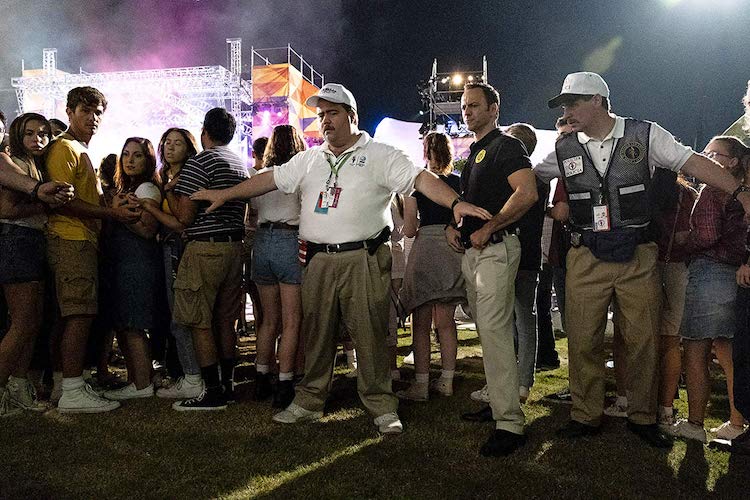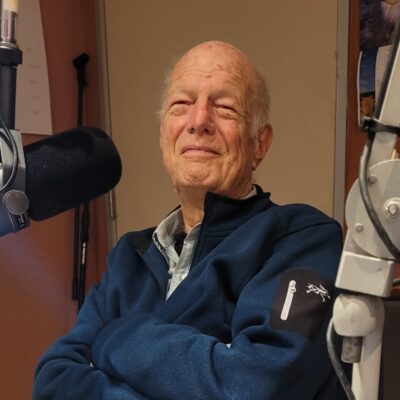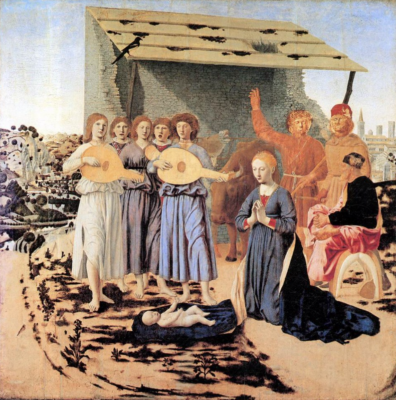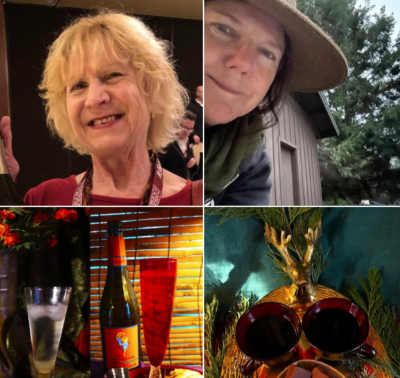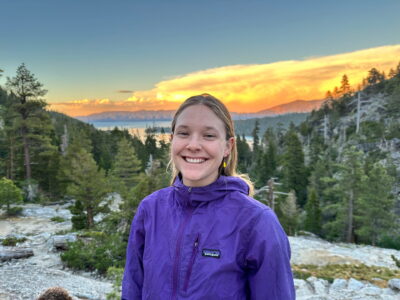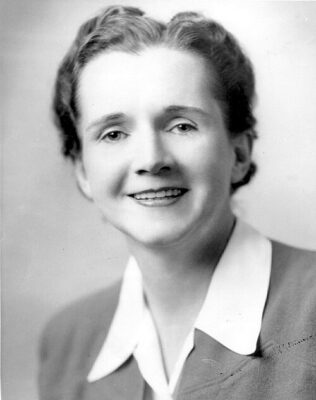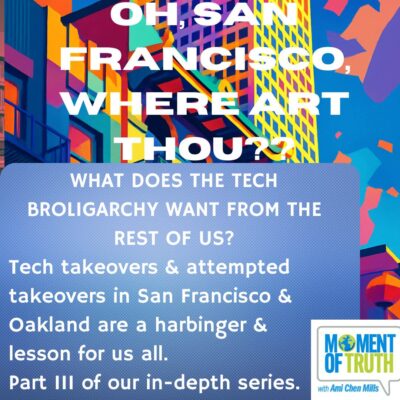
This is the transcript of the feature by Grace McCarty on Watsonville is in the Heart’s exhibit, Sowing Seeds: Filipino American Stories from the Pajaro Valley
Me: This is Grace McCarty, the UCSC humanities intern with KSQD.
The Pajaro Valley has long been home to farmworkers from around the world, who came to harvest the fruit and vegetables that are grown there. Thousands of Filipino laborers migrated to the region at the beginning of the last century, creating a rich cultural history spanning generations. Filipino American stories in the Pajaro Valley have been overlooked especially by its neighboring universities. But recently, researchers at UCSC have been working to change this. As part of the Watsonville is in the Heart project, the research works to expand the narrative of Filipino-American studies, reexamining the lives of laborers and their descendants.
In April the exhibit “Sowing Seeds: Filipino American Stories from the Pajaro Valley” opened at the Santa Cruz Museum of art and History. Exploring Filipino migration from the 1930s to the present, it highlights archival photographs and heirlooms, contemporary art, and notable oral histories to create a public record that reflects the community it represents.
When I got to sowing seeds, there was a quiet observance throughout the exhibit. Some families walked around the collections talking quietly with each other, others walked alone in complete silence. I asked visitors and students what they took out of Sowing Seeds.
Speakers: Yeah, so growing up in Santa Cruz, I briefly remember in probably one history class for like a day, maybe half a lecture, they briefly mentioned Filipino history in Watsonville, and ever since then I have not heard a single peep about it, and this is really the first time I’ve been able to get a full education on their history and just how deep the roots go in our county.
I think it’s definitely important especially if like Santa Cruz in general they like to paint themselves as people who’s like oh we’re so like it’s like organic and it’s like oh form to fork type things like they’re so heavy on that and they should like acknowledge the people that made that happen
Man: so like as someone who is a Mexican American myself, who comes from a community that are, where there are not a lot of Mexican Americans, I think that it’s important that these niche areas that cover different ethnic groups who come from different immigrant communities is very important because it can speak to the experiences of a lot of different people that we might not be thinking about.
ME: In one segment, a series of photographs are displayed, one that depicts an old picture of a woman outside in a garden. She is surrounded by wide open fields of flowers, and looks straight on to the camera with a quiet strength that seems almost modern for the time. The audio guide describes the context of the image
AUDIO GUIDE: During our interview with Loren Cawaling, he showed us this photograph of his mother, Aladina Cawaling, standing in a field of flowers. The photograph elicited memories of Loren’s mother, including her fondness for gardening and her experiences working in the canneries. Many manang worked in the food processing industry including canneries and frozen food packaging factories, and this interview captures their labor. Watsonville, dubbed the “Frozen Food Capital of the World” during the 1980s, was the hub f or food processing in part because of manang labor. In this interview, Loren recalls the hardships his mother endured while working at Green Giant, one of the major canneries in the area.
LOREN: I mean, you know, I love this picture. […] My mom had a green thumb. […] I mean, everybody used to tell us man, you know, your mom’s yard this and that. She had beautiful flowers in the front yard. I mean, it was always colorful all the time. […] You know, she did like everybody else. Everybody worked on the canneries back in the old days. […] That original Green Giant cannery sat at the corner of Walker Street and Beach Street, and I want to say back in the 60s when my mom was working, it employed a lot of people. I mean, there was no OSHA regulations back then and stuff. My mom used to tell me stories of accidents there, where, let’s say, no one was wearing a hairnet. I remember a story that she said that somebody got their hair caught in a piece of machinery. I mean, nobody got killed or anything, but but you know, she was telling me that somebody got hurt. My Manang Rosie used to work there. I think my Aunty Lita used to work there. Just because that was like one of the first processing plants in the area, and everybody wanted to get a job there. […] You know, I remember her putting a hairnet on, and, you know, my dad would drop her off in front of the factory, you know, before he had to go to work in the fields or whatever. And then yeah, and then come back and pick her up later on.
Professor Kathleen Gutierrez, the voice of that audio guide and co-curator of Sowing Seeds and lead researcher with Watsonville is in the heart, is a historian of science in Southeast Asia. Dr. Guttierz came across Watsonville in an archival letter from the Philippines that discussed the racial violence of the reigon. She was first introduced to Watsonville is in the heart back in 2019, when a Filipino community organzier Roy Recio, came to UC Santa Cruz to curate stories of Filipino immigrants.
KAT: I came across Watsonville and the Watsonville race riots, funnily enough, through a botany archive, and I was studying the archive of this one botanist who, by the 1930s, was based in New York, and he had spent about 20 years in the Philippines, and he received a letter from one of his Colleagues in the Philippines who during the Great Depression was interested in moving to the United States because he thought that there would be more opportunities.
And he asked that botanist is the racial feeling in New York as intense as it is in California and, as violent as it is in Watsonville.
With this exhibition called originally, Watsonville is in the Heart in early 2020 had opened up the Watsonville Public Library, so he cared about exhibitions, you know, it was important to him to be able to display and to promote Filipino American history locally, so I think when Roy approached me, I felt, uh, like a duty and an interest to support him in some way. Um, I’m no, you know, I would never deny the intense privilege one has working at the university, working in a university, especially being a professor in one. And, You know, we come with a lot of resources, a lot of backing and a lot of institutional support that could really change the nature of a community engaged project, not always for the better, but certainly we have certain machinery that could help, you know, um, And so I saw it as sort of a responsibility to Roy, and also as a person who came from a historical Filipino enclave myself. Um, I knew that, you know, this was also going to be part of me trying to develop and find home out here in the Central Coast, too. Um, I would say that the history of science connection to the history of Filipino farm labor in the Pajaro Valley, can seem quite far, but there are pockets and moments where I really, really look forward to kind of following the breadcrumbs into more.
Me: Fillipino-American migration significantly increased at the start of the 20th century, when over 100,000 laborers were recruited to work in US agricultural fields and canneries. The Pajaro Valley, the agricultural driver of Santa Cruz county, became a center for an influx of young and single Filipino men, known as Manong, Tagalog for “Little Brother ”.
The Sowing Seeds exhibition centers around four central themes that structure these experiences, “Labor, Gender, Conflict, and Memory”- responding to the history of gendered and racialized violence that has occurred in Watsonville
Relationships between white women and Filipino migrants caused tensions to rise within the reigon, culminating in the Watsonville Race riots of 1930, a period of violence from white men against filipinos that spanned multiple days. Over 500 white men gathered outside a Filipino-owned taxi dance club with mobs and clubs, threatening to take out the 9 white women who worked there. The violence spread around the city, 22 Filipino American men were dragged out of a labor camp out into the streets and beaten vigorously. Fermin Tobera died at age 22 after being shot in the heart when he was hiding in a closet with 11 others, trying to avoid the rounds of bullets fired at a bunkhouse in Murphy Ranch in San Juan Road on January 23.
In Sowing Seeds, scenes of racial tension are remembered and memorialized, but the experiences are also expanded upon to create more nuanced depictions of cultural memory. As the Asian American historical experience in the Pajaro Valley has been so shrouded with violence, layered experiences from many stages of life are provided, creating a deeper understanding of the settings we find these voices in and a glimpse of everyday life.
In the audio guide, Dr Guttierez narrates us through childhood memories of various sites of cultural importance in Watsonville, while her husband provides instrumental music to further root us in the scene. In this next clip, Shirley Ancheta provides her childhood experiences in a labor camp. Labor camps often hosted manong- and were the sites of racialized violence throughout the riot in 1920. In this oral history segment, Shirley provides a different perspective of the camps from the inside, describing the cultural memories of life on an off day.
AUDIO GUIDE: To ensure a steady flow of migrant farm workers, farm owners built labor camps where many manong and manang lived with their children. The design and condition of these housing units varied. Some were built as barracks where many transient men would live; others housed single families. Typically, they were maintained to barely passable conditions, but manong and manang transformed them into homes where they could relax and play. In this interview, Shirley Ancheta, the daughter of Julio Valiente and Delfina Rivera Ancheta, describes a typical scene in a labor camp. The interview is paired with a photograph from the Cawaling Family Collection, which depicts Manong inside of a camp on their day off.
Usually, it was the same cook. There’ll be one person sitting at a table playing solitaire. […] There may be a Playboy calendar on the wall somewhere or a Mexican calendar on the wall somewhere from the grocery store. […] And there would be lots of food. The women who would come, like the wives, like my mom and others they get busy cooking the pastries, things that she would make out of the sweet rice flour and fry up and put the brown sugar and stuff on top of it and the coconut milk. So they would get busy doing that while the men did the butchering and the— They’d go down to the beach if, if it was low tide and do the mussels. […] My brother and I, you know, when our parents would say “Okay, we’re going to camp” and we thought, “Oh why, when are we going to go to the real camp?” Cause we’re thinking summer camp. “ You always say we’re gonna go camping, but we’re gonna go see those guys.” And my mom would say “Don’t talk like that cuz these are our friends. […] They got stuck over here. This is their life.
Dr Guttierrez has a background in the history of science, and learned about the method of conducting oral histories that make up the Sowing Seeds exhibit over a period of time. She became interested in the aspects of collaboration that make community history unique, specifically in developing the practice of oral history.
PROF G: And I have to say, I think when I found myself out the gate, I really found myself loving the method. The method is exciting. I think it’s It calls for a lot of patience and earnest curiosity. And I think because I also was not trained in Filipino American studies, um, I didn’t have an agenda, you know, I don’t know if I was looking for an intellectual answer.
I don’t know if I was even looking to kind of prove some theory, you know, that has sort of abounded in the scholarship around Filipino American studies or Asian American studies. I really went in kind of as green and as a novice with. That kind of, you know, a curiosity that I think helps keep conversations going.
That said, things weren’t always perfect. And, you know, I look, listen back to my older oral history interviews, and there are so many things I would change, um, even engaging with these community partners and questions that I would adjust to really allow for more conversations about their own interiority.
I think, um, even if I didn’t have an intellectual agenda, the very basis of having an agenda of what I wanted to ask. Sometimes really just redirected interviews in ways that I don’t know were as productive. Um, and so I’ve seen this as an opportunity also to get better at oral history interviewing to prepare me for more oral history I want to do in the Philippines, um, especially with scientists.
And I think it’s a very different kind of place, you know, and landscape when doing oral history in the Philippines, but the skill set, I think, is transferable, and I really do love it. Um, and I really enjoy working with other people who also practice it.
So much of academia can seem like an individualist pursuit, especially in the humanities. It’s a little different in STEM, I think, where we might expect a lab to have multiple people, multiple co authors at the end of the day for a particular project.
But the humanities has long been about, you know, individual intelligence and genius kind of hitting the pages. And I think this project has really, really underscored the opportunity in working with such a big team. I think things absolutely do take longer, and because we pursue co authorship with our community partners, it means that we have to really go back to the drawing board.
multiple times over to ensure that their visions are being met to the best that we can and really balanced out with the kind of visions that we’re trying to bring into the project. And so sure, like if I were to do this alone, maybe things could go faster, but I don’t think they’d be nearly as expansive, robust, innovative and insight and
ME: As a Filipino-American woman herself, she spoke to me about how this project related to her own identity:
DRG: I can walk into a room and for the most part be racialized as Filipino and for a long time I would, you know, identify myself as Phil am and that was about it.
It was just a given, um, as being part of the diaspora and being a second-generation kid here in the United States. Um, you know, my family arrived in the 1980s and I was the only one of my family born here. So, you know, being Filipino American and growing up, especially among a lot of Filipino Americans meant that, you know.
It was a given and that’s about it. And I think, you know, since working on this project, I’d have to say maybe a couple of things have sort of come to mind. The first is, um, recognition that, you know, Filipino American studies is, I mean, it’s really kind of vast and incredible, again, not my area of specialization, but has been, you know, enjoyable to get to read and understand better.
Dr G mentioned one interview she did with Juanita Suli Wilson, a community figure from Watsonville who spoke about her memories growing up in the Watsonville area. Juanita explains her experiences dealing with prejudice as a young girl.
Oral history: You know, you kind of referred to it a little bit, the, you know, you identified as kind of the only ethnic family in the neighborhood. Did it feel like that, though? Did you feel different, ethnic, compared to the other kids? Or the other Italian kids? Well, yeah, you kind of had to. Yeah. Yeah. Yeah. If people deny it, you know, like people I went to school with and stuff deny that there was no prejudice, but there was.
But my mother, my mother always had an answer for it. Like, I guess I used to come home crying from school. And my mother would tell me, don’t pay attention. They’re, they’re ignorant people. They’re ignorant. And then, I guess. She would talk to the aunties, and then they came back with a, she came back with a story for me.
And she would tell me the story, and then, you know, we just ignored them. We just said, well, they’re ignorant, they’re not, they’re stupid people, they don’t know, they don’t know anything. So, and we were kept very close to home. The only time we left was to go to school. You know, other than that, our whole social was around the community.
Right, right. So we were very, we were, you know, really protected. Right. Yeah. Like the aunties and the uncles. Yeah, yeah. So, yeah, we didn’t, yeah, we were protected and we weren’t told things we weren’t, we didn’t need to know. Okay. Could you maybe describe that, an instance of prejudice that you remember from your childhood, if you feel comfortable?
I was always asked where you come from. What are you?
I’m Filipino, I would say. Not knowing I wasn’t supposed to say that, but that’s how we were raised. We were raised to be proud of who we were
Me: On the meaning of sowing seeds, Dr G described the duality of the name. She explained that the experiences she has had witnessing people experience this exhibit has “sown seeds” in itself. Sowing seeds has both a literal meaning, but also a metaphorical meaning is one is you can expect.
And for me, I think sowing seeds refers to, you know, um, the history of agrarian farm labor, which, you know, we deeply care about in the project, and the potential of growing something, um, whether that is community historical preservation, whether that is, you know, community formation in the face of, you know, racial duress and exclusion.
And I think for me, it’s again, this kind of phrase that points to potential for something more. And It’s my hope too that people leave the exhibition feeling pretty excited to kind of sow their own seeds for their own community historical preservation as well. I think an exhibition is an interesting format for history
Yeah, um, I was there for, you know, the opening night and I have to say that was probably the most emotional I’ve gotten. Um, you know, there have been a lot of emotional moments during the life of this project, but that night in particular kind of really opened some of the floodgates and we had a, you know, kind of smaller preview of the exhibition that the curator-led and there’s a great animated film that the curator, um, put in the exhibition and the curated, the animated film covers, um, one of our main community contributors.
And we, I got to see his face as he saw the film, you know, play in the gallery and, oh gosh, it just, it floored me. It just floored me. Um, you gave, we gave each other a hug at the end of that tour. And, you know, you just, Like, I heaved, like I cried, you know, in his arms even harder when I just kind of recalled, um, not only his devotion to our work, but really his, his real love for his parents and the way that he spoke of them.
And, you know, this is not to say that everyone’s relationship with their parents is perfect and that we should romanticize, you know, these sorts of familial bonds when, you know, we, we have to admit that sometimes they’re quite hard, but sometimes they’re also really beautiful and sometimes they’re really worth celebrating too.
Me: Although the museum shows the reality of the struggles faced by Filipino Americans in the Pajaro valley, it is also a celebration of the perseverance of their rich cultural histories that have long been unrecognized. The nuances provided by a community history can demonstrate the complexities of human experiences, oral accounts that remember the good with the bad and everything in between. The objects of reverence in this exhibit are not dusty artifacts from thousands of years ago, but memories of real people, some who might be standing right beside you.
“Sowing Seeds: ”Filipino American stories from the Pajaro Valley” will continue with the Santa Cruz museum of art and history until august 4th. This is Grace McCarty, UCSC’s humanities intern and this is KSQD.


